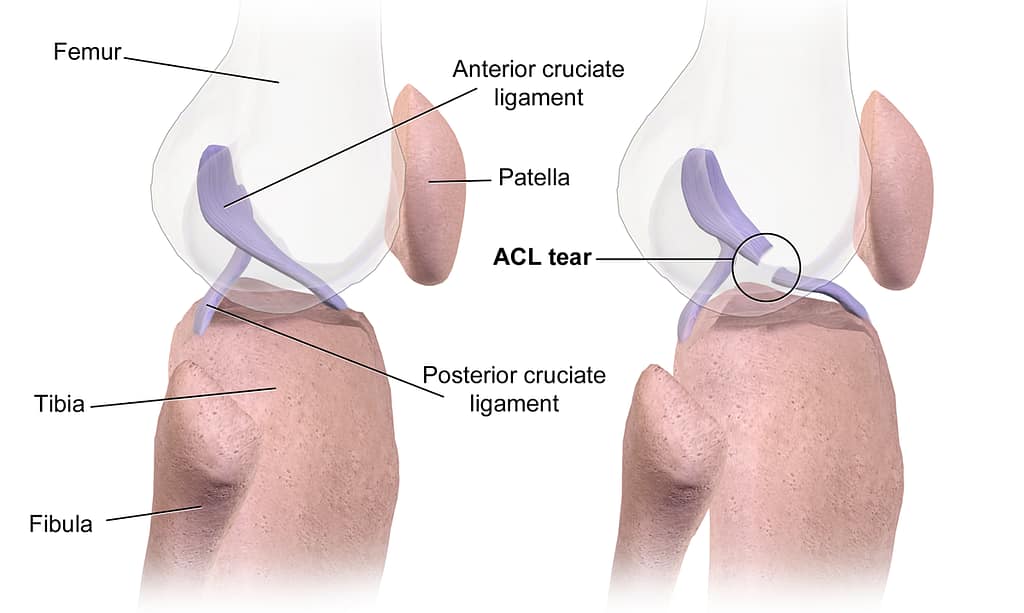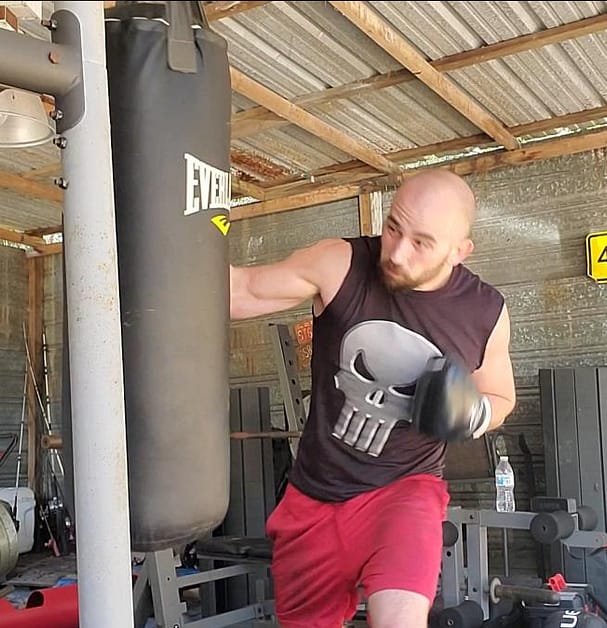The good old ACL injury. It’s something you hear about constantly in pro sports. Funny enough, it’s actually one of the very few injuries I don’t have. So today, I was thinking about what to right and it hit me. I should write about an injury I don’t have, so that I can stop myself from getting it! Genius, right?
What is an ACL?
What ACL actually stands for is the Anterior Cruciate Ligament. The most common injury you’ll see people get there is a sprain or tear, especially athletes who participate in high demand sports on their knees. Things like football, basketball, and soccer are places that this kind of thing is common.
Now, into the meat of things. Things of course being your ACL. In all that meet around your knee are three bones that meet to form your knee joint. Your thighbone (the femur), the shinbone (tibia), and the kneecap (patella). Your kneecap is there mostly to protect all the squishy bits inside.
These bones are all connected to each other by ligaments. And among those, there are four primary ones in your knee. These act like strong ropes that hold your bones together and keep your knee together.
There are the collateral ligaments which are found on the sides of your knee. The medial C. ligament is on the inside, and the lateral C. ligament is on the outside. These control the sideways motion of your knee and brace them.
But there are also the cruciate ligaments. Your cruciate ligaments are found inside of your knee joint. These cross each other to form an X with the anterior C. ligament in front and the posterior one in the back. These guys are crucial, because they control the back and forth motion of your knees.
Types of Injuries
About half of all of the injuries to the ACL occur along with damage to other structures. Injured ligaments are also considered “sprains”, and are graded by severity.
You have Grade 1 Sprains to start with. The ligament is mildly damaged here. It’s been stretched lightly, but is still able to keep the knee joint stable.
Then there’s the Grade 2 sprains. This is when your ligament is stretched to the point where it becomes loose. This is often referred to as a partial tear.
Then you have the Grade 3 sprains. This is what’s commonly referred to as a completely tear of your ligament. This is when it’s torn into two pieces and the knee joint is unstable. Partial tears are rare, you’ll usually see a grade 3 if anything.
There are a few symptoms you can look for when it comes to your ACL.
- A loud “pop” or a “popping” sensation in your knee.
- Severe pain and inability to continue activity.
- Swelling in your knee that begins within a few hours.
- Loss of range of motion.
- A feeling of instability or “giving way” with your weight bearing.
How to Prevent ACL Injury
Well, now that you’ve read about it I’m sure you understand. This is not something I, or you, want to experience. So I’ll go into the, surprisingly simple, ways to prevent acl injury.
The first point I have is pretty simple. If you’re going to do something taxing, make sure to warm up. Get blood circulating with a nice warm up and you’ll be at less risk. To kind of go hand in hand with that, stretch. But stretch smartly, include stretches for your thighs, calves, and hips.
Having adequate strength in your hips and thighs is important to providing support for your knees. I’ll give you a quick list of good exercises for this:
- Squats. With good form, of course.
- Lunges. Walking lunges in particular are good for this.
- Core exercises. Things like planks, hip bridges, and the like.
And there you go. It’s a lot more simple than you think. Play smart, exercise well, and you can avoid a knee injury. ACL injury is bad, but you can make sure never to get it.



